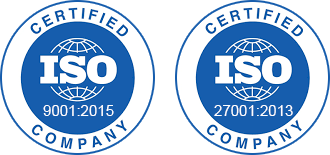
U.S. Urgent Care Centers Market Size, Share & Trends Analysis Report By Application (Acute Respiratory Infection, Injuries, Joint/Soft Tissue Issues), By Ownership (Hospital, Corporation, Physicians), And Segment Forecasts, 2025 - 2030
- Report ID: GVR-2-68038-655-4
- Number of Report Pages: 100
- Format: PDF, Horizon Databook
- Historical Range: 2018 - 2024
- Forecast Period: 2025 - 2030
- Industry: Healthcare
Table of Contents
Chapter 1. Methodology and Scope
1.1. Market Segmentation & Scope
1.1.1. Segment Definitions
1.2. Estimates and Forecast Timeline
1.3. Research Methodology
1.4. Information Procurement
1.4.1. Purchased Database
1.4.2. GVR’s Internal Database
1.4.3. Secondary Sources
1.4.4. Primary Research
1.4.5. Details of Primary Research
1.4.6. Research Assumption
1.5. Information or Data Analysis
1.5.1. Data Analysis Models
1.6. Market Formulation & Data Visualization
1.7. Model Details
1.7.1. Volume Price Analysis
1.8. Objectives
1.8.1. Objective - 1
1.8.2. Objective - 2
1.8.3. Objective - 3
1.9. List of Secondary Sources
1.10. List of Abbreviations
Chapter 2. Executive Summary
2.1. U.S. Urgent Care Centers Market
2.1.1. Market Snapshot
2.1.2. Segment Snapshot
2.1.2.1. Application segment outlook
2.1.2.2. Ownership segment outlook
2.1.3. Competitive Landscape Snapshot
Chapter 3. Market Variables, Trends, & Scope
3.1. Market Lineage Outlook
3.1.1. Parent Market Outlook
3.1.2. Related/Ancillary Market Outlook
3.2. Market Dynamics
3.2.1. Market Driver Analysis
3.2.1.1. Lesser waiting room times
3.2.1.2. Low cost compared to physician clinics
3.2.1.3. Telehealth adoption
3.2.2. Market Restraint Analysis
3.2.2.1. Lesser adoption rate among senior citizens
3.2.2.2. Lack of awareness regarding urgent care centers
3.3. Regulatory Framework
3.4. Business Environment Analysis Tools
3.4.1. Industry Analysis - Porter’s Five Forces Analysis
3.4.1.1. Supplier power
3.4.1.2. Buyer power
3.4.1.3. Substitution threat
3.4.1.4. Threat of new entrant
3.4.1.5. Competitive rivalry
3.4.2. PESTEL Analysis
Chapter 4. Application Business Analysis
4.1. U.S. Urgent Care Centers Market: Application Movement Analysis
4.2. U.S. Urgent Care Centers Market: Application Segment Dashboard
4.3. Application Movement & Market Share Analysis, 2024 & 2030
4.4. U.S. Urgent Care Centers Market Estimates & Forecast, by Application
4.5. Respiratory Diseases & Infections
4.5.1. Respiratory Diseases & Infections Market, 2018 - 2030 (USD Million)
4.6. General Symptoms
4.6.1. General Symptoms Market, 2018 - 2030 (USD Million)
4.7. Injuries
4.7.1. Injuries Market, 2018 - 2030 (USD Million)
4.8. Joint/Soft Tissue Issues
4.8.1. Joint/Soft Tissue Issues Market, 2018 - 2030 (USD Million)
4.9. Digestive System Issues
4.9.1. Digestive System Issues Market, 2018 - 2030 (USD Million)
4.10. Skin Infections
4.10.1. Skin Infections Market, 2018 - 2030 (USD Million)
4.11. Urinary Tract Infections
4.11.1. Urinary Tract Infections Market, 2018 - 2030 (USD Million)
4.12. Ear Infections
4.12.1. Ear Infections Market, 2018 - 2030 (USD Million)
4.13. Sprains, Strains and Fracture
4.13.1. Sprains, Strains and Fracture Market, 2018 - 2030 (USD Million)
4.14. Influenza & Pneumonia
4.14.1. Influenza & Pneumonia Market, 2018 - 2030 (USD Million)
4.15. Others
4.15.1. Others Market, 2018 - 2030 (USD Million)
Chapter 5. Ownership Business Analysis
5.1. U.S. Urgent Care Centers Market: Ownership Movement Analysis
5.2. U.S. Urgent Care Centers Market: Ownership Segment Dashboard
5.3. Ownership Movement & Market Share Analysis, 2024 & 2030
5.4. U.S. Urgent Care Centers Market Estimates & Forecast, by Ownership
5.5. Hospital
5.5.1. Hospital Market, 2018 - 2030 (USD Million)
5.6. Corporation
5.6.1. Corporation Market, 2018 - 2030 (USD Million)
5.7. Physicians
5.7.1. Physicians Market, 2018 - 2030 (USD Million)
5.8. Others
5.8.1. Others Market, 2018 - 2030 (USD Million)
Chapter 6. Competitive Landscape
6.1. Company Categorization
6.2. Company Market Position Analysis
6.3. Company Share Analysis
6.4. Strategy Mapping
6.4.1. Partnership/Collaboration/Alliance
6.4.2. New Service Launch
6.4.3. Mergers & Acquisitions
6.4.4. Others
6.5. Company Profiles/Listing
6.5.1. Concentra, Inc.
6.5.1.1. Overview
6.5.1.2. Financial performance
6.5.1.3. Service benchmarking
6.5.1.4. Strategic initiatives
6.5.2. American Family Care
6.5.2.1. Overview
6.5.2.2. Financial performance
6.5.2.3. Service benchmarking
6.5.2.4. Strategic initiatives
6.5.3. CityMD Urgent Care
6.5.3.1. Overview
6.5.3.2. Financial performance
6.5.3.3. Service benchmarking
6.5.3.4. Strategic initiatives
6.5.4. MedExpress Urgent Care
6.5.4.1. Overview
6.5.4.2. Financial performance
6.5.4.3. Service benchmarking
6.5.4.4. Strategic initiatives
6.5.5. NextCare Urgent Care
6.5.5.1. Overview
6.5.5.2. Financial performance
6.5.5.3. Service benchmarking
6.5.5.4. Strategic initiatives
6.5.6. Tenet Health Urgent Care
6.5.6.1. Overview
6.5.6.2. Financial performance
6.5.6.3. Service benchmarking
6.5.6.4. Strategic initiatives
6.5.7. FastMed Urgent Care
6.5.7.1. Overview
6.5.7.2. Financial performance
6.5.7.3. Service benchmarking
6.5.7.4. Strategic initiatives
6.5.8. Ascension Health Urgent Care
6.5.8.1. Overview
6.5.8.2. Financial performance
6.5.8.3. Service benchmarking
6.5.8.4. Strategic initiatives
6.5.9. Aurora Urgent Care
6.5.9.1. Overview
6.5.9.2. Financial performance
6.5.9.3. Service benchmarking
6.5.9.4. Strategic initiatives
6.5.10. WellNow Urgent Care
6.5.10.1. Overview
6.5.10.2. Financial performance
6.5.10.3. Service benchmarking
6.5.10.4. Strategic initiatives
6.5.11. Sutter Health
6.5.11.1. Overview
6.5.11.2. Financial performance
6.5.11.3. Service benchmarking
6.5.11.4. Strategic initiatives
6.5.12. Intuitive Health
6.5.12.1. Overview
6.5.12.2. Financial performance
6.5.12.3. Service benchmarking
6.5.12.4. Strategic initiatives
6.5.13. HCA Healthcare
6.5.13.1. Overview
6.5.13.2. Financial performance
6.5.13.3. Service benchmarking
6.5.13.4. Strategic initiatives
List of Tables
Table 1. List of secondary sources
Table 2. List of abbreviations
Table 3. U.S. urgent care centers market revenue estimates and forecast, by application, 2018 - 2030 (USD Million)
Table 4. U.S. urgent care centers market revenue estimates and forecast, by ownership, 2018 - 2030 (USD Million)
List of Figures
Fig. 1 U.S. urgent care centers market segmentation
Fig. 2 Market research process
Fig. 3 Information procurement
Fig. 4 Primary research pattern
Fig. 5 Market research approaches
Fig. 6 Value chain based sizing & forecasting
Fig. 7 QFD modelling for market share assessment
Fig. 8 Market formulation & validation
Fig. 9 Market snapshot
Fig. 10 Type segment outlook
Fig. 11 Competitive landscape
Fig. 12 U.S. urgent care centers market: Market dynamics
Fig. 13 U.S. urgent care centers market: Porter’s analysis
Fig. 14 U.S. urgent care centers market: PESTLE analysis
Fig. 15 U.S. urgent care centers market: Application segment dashboard
Fig. 16 U.S. urgent care centers market: Application movement share analysis
Fig. 17 Respiratory Diseases & Infections market, 2018 - 2030 (USD Million)
Fig. 18 General symptoms market, 2018 - 2030 (USD Million)
Fig. 19 Injuries market, 2018 - 2030 (USD Million)
Fig. 20 Joint/soft tissue issues market, 2018 - 2030 (USD Million)
Fig. 21 Digestive system issues market, 2018 - 2030 (USD Million)
Fig. 22 Skin infections market, 2018 - 2030 (USD Million)
Fig. 23 Urinary tract infections market, 2018 - 2030 (USD Million)
Fig. 24 Ear infections market, 2018 - 2030 (USD Million)
Fig. 25 Sprains, strains, and fracture market, 2018 - 2030 (USD Million)
Fig. 26 Influenza & pneumonia market, 2018 - 2030 (USD Million)
Fig. 27 Others market, 2018 - 2030 (USD Million)
Fig. 28 U.S. urgent care centers market: Ownership segment dashboard
Fig. 29 U.S. urgent care centers market: Ownership movement share analysis
Fig. 30 Hospital market, 2018 - 2030 (USD Million)
Fig. 31 Corporation market, 2018 - 2030 (USD Million)
Fig. 32 Physicians market, 2018 - 2030 (USD Million)
Fig. 33 Others market, 2018 - 2030 (USD Million)
Fig. 34 Company categorization
Fig. 35 Company market position analysis
Fig. 36 Strategic framework



